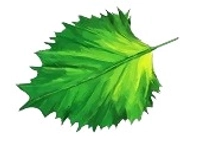
Joginder Nursery
Product details
Zamia Palm, also known as Zamia furfuracea or Cardboard Palm, is a striking and unusual plant native to Mexico. Despite its common name, it's not a true palm but rather a cycad, a group of ancient plants that predate most flowering plants. Here's more about it:
2. **Cultivation**: Zamia Palms are well-suited to warm, tropical climates and are often grown as ornamental plants in gardens or as houseplants in cooler regions. They prefer well-draining soil and thrive in partial shade to full shade, making them suitable for areas with limited sunlight. They are drought-tolerant once established but should be watered regularly during the growing season.
3. **Growth Rate**: Zamia Palms are slow-growing plants, with new fronds emerging gradually over time. This slow growth rate makes them well-suited to indoor cultivation, as they won't quickly outgrow their space.
4. **Toxicity**: Like many other cycads, Zamia Palms contain toxins that can be harmful if ingested, especially to pets. All parts of the plant are considered toxic and should be kept out of reach of children and animals.
5. **Propagation**: Zamia Palms can be propagated from seeds or by dividing mature plants. Seeds should be soaked in water for several days before planting to soften the outer seed coat and improve germination rates. Dividing the plant involves separating the offsets or "pups" that grow around the base of mature plants and replanting them in individual pots.
6. **Landscape Use**: In tropical and subtropical regions, Zamia Palms are often used in landscaping to add a touch of exotic flair to gardens and outdoor spaces. They can be planted as specimen plants or used in mixed plantings with other tropical species.
7. **Symbolism**: While Zamia Palms don't have specific cultural or symbolic significance in the same way as some other plants, they are admired for their unique appearance and resilience, with their ancient lineage adding to their allure.
Overall, Zamia Palm is a fascinating and attractive plant that adds a touch of tropical elegance to any indoor or outdoor space. With proper care, it can thrive for many years, becoming a beloved centerpiece of your plant collection or garden.
Similar products